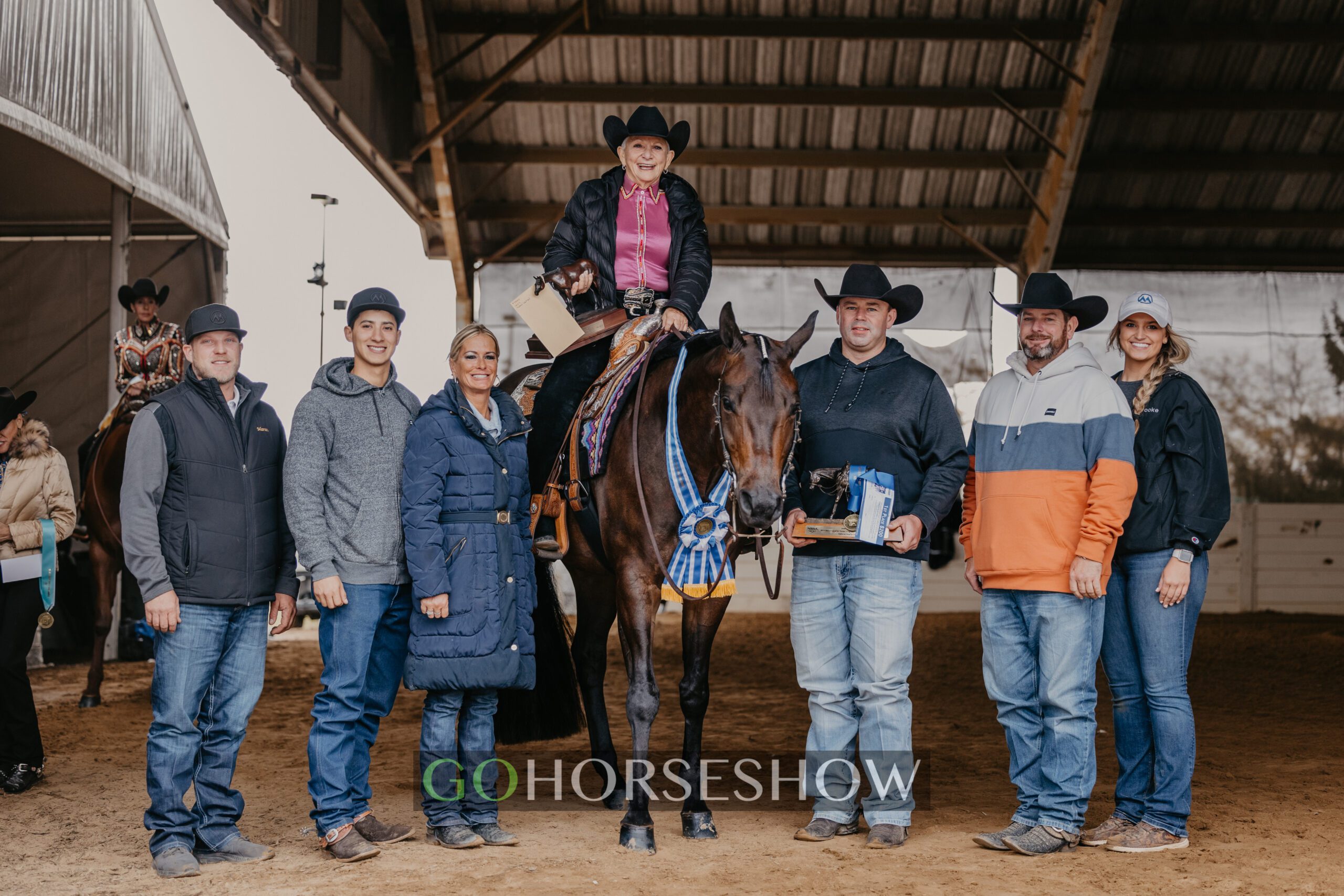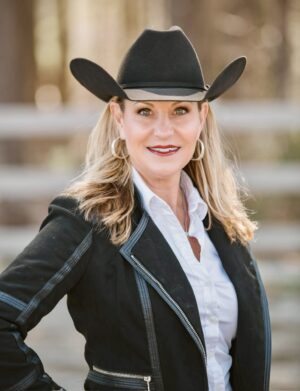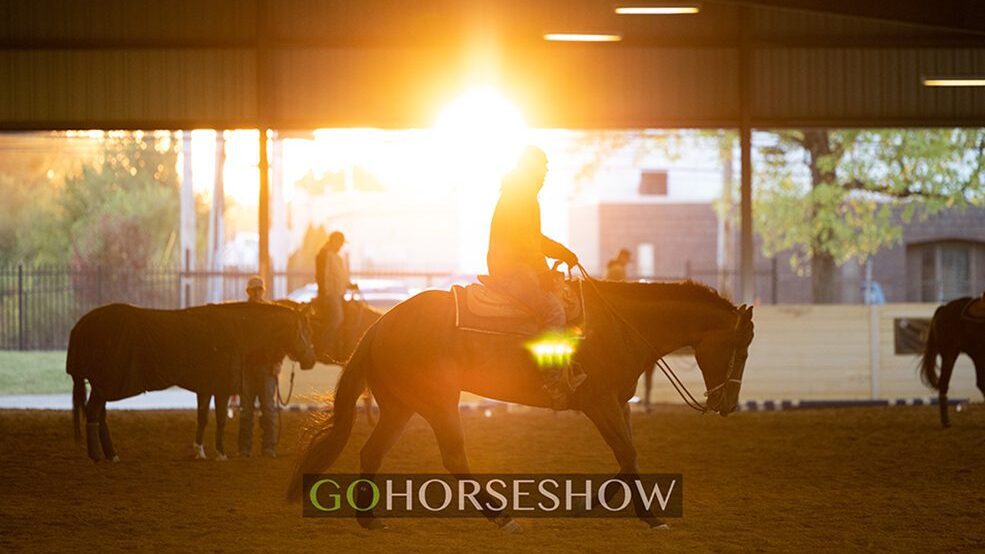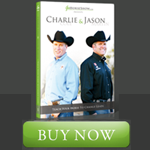To say horse show people are unique is an understatement. In a society where judgment has negative connotations, it takes a special kind of individual to make a hobby of signing up – and paying – to be judged.
But, as crazy as it may sound to an outsider, that’s what horse people do. They dissect every footfall in every run and every mark on a judge’s scoresheet. Exhibitors are competitive, self-critical, and inherently driven to succeed.
Sometimes, though, those same qualities that can lead to success are a recipe for disaster in the form of over-training, over-practicing, and possible eventual burn out for both horse and rider.
Here, trainers Whitney Lagace and Carmen Mayabb, share their insights and advice about finding the right balance to prevent over-practicing.
Have a goal for each ride before stepping into the stirrup
Knowing exactly what the goal to accomplish is before saddling up is key to making each training session a productive one. Without a goal, there will likely not be a positive result: either the horse and rider will accomplish nothing, or – perhaps worse – they will try to work on too many things in one ride, resulting in frustration from both parties.
“If you’re not sure what the day’s lesson should be, then evaluate your horse in the beginning of your ride and work on what is weak that day. This could be lightening up their face, working on stronger stops, getting the shoulders to move more freely or the belly to move off of the leg more,” Lagace says, emphasizing that training sessions can and should vary in length to help with mental freshness. “Some people think the longer the ride, the better, but it’s much more about the quality of ride than the length of the ride. If you get your objective met in a short ride, reward your horse for that.”
Remember that training does not have to happen under saddle
Obviously, horses and riders need personalized plans of work to achieve optimum condition. At the start of a season or for a horse who’s had time off, training sessions should start slow and be much shorter than horses that are already legged up and well conditioned. The same is true for riders. But once both are in good working shape, remember that maintenance conditioning does not all have to happen with time in the saddle.
 “Keep an eye on your horse’s attitude. They will let you know when you are overdoing it,” Lagace says. “It is important to keep a good attitude if you want to keep a winning edge. They have to be worked enough to stay in condition, but that doesn’t all have to be under saddle.”
“Keep an eye on your horse’s attitude. They will let you know when you are overdoing it,” Lagace says. “It is important to keep a good attitude if you want to keep a winning edge. They have to be worked enough to stay in condition, but that doesn’t all have to be under saddle.”
Consider adding on-the-ground sessions like lunging, or diversifying what you do under saddle – take a break from the arena and hit the trails for some equine cross training and a breath of fresh air. Mayabb uses a hot walker to ensure senior horses that don’t need daily riding get some exercise. She also uses it for young horses as it is less strenuous than lunging.
She also suggests that riders get on a different horse when their primary mount needs some time off. “It’s always helpful if there’s another horse that you can ride if your horse needs a break. I think riding different horses from time to time makes everyone a better rider.”
Don’t underestimate the power of time off
A mental and physical break can do wonders for re-charging the proverbial batteries. In the same way that a short beach vacation is reinvigorating, a few days of turn out, rest, or pampering for horse partners can do just as much good for their mental well being as it does for human vacationers.
“Time off for both horse and rider is very important, especially after a large show or a long event. Mental and physical breaks are needed and very healthy for all involved – including trainers! We love to give our horses several days of turn out when we get home from a show to let everyone decompress. We start back with fresh minds and bodies,” Mayabb says.
Lagace also sees the value of planned time off, explaining how she differentiates that time for varying needs.
 “Time off is a very individual thing. I give both my horses and riders breaks, but they are not all the same. My senior horses will get more down days because they don’t need to be harped on; they are very educated in their jobs. My young horses’ rest periods are more specific: some need time to grow, some need more recoup time for their bodies and some get worked a couple times a day and don’t seem to benefit from too much down time. We try to really see what the horse needs and cater to them personally,” Lagace says. “The same is true for riders. We evaluate what their needs and goals are, and that will help us figure out how much time we are going to need to plan for. What I expect from my youth kids in terms of weekly rides and the lengths of those rides won’t be the same as what I expect from my select riders.”
“Time off is a very individual thing. I give both my horses and riders breaks, but they are not all the same. My senior horses will get more down days because they don’t need to be harped on; they are very educated in their jobs. My young horses’ rest periods are more specific: some need time to grow, some need more recoup time for their bodies and some get worked a couple times a day and don’t seem to benefit from too much down time. We try to really see what the horse needs and cater to them personally,” Lagace says. “The same is true for riders. We evaluate what their needs and goals are, and that will help us figure out how much time we are going to need to plan for. What I expect from my youth kids in terms of weekly rides and the lengths of those rides won’t be the same as what I expect from my select riders.”
Lagace emphasizes the importance of treating each day with a fresh slate. Sometimes, she says, riders arrive depleted from the outside world, so it’s important to recognize that piling on difficulty on a day like that would be unwise.
“On the other side of things, if someone comes in and they seem totally on their A game that day, then I know I can push more and maybe get some next level stuff done. If I try that on the wrong day, though, I will be pushing them and their horses toward burnout, and I do not want to do that,” she says.
Work the mental side of the game and give the physical a break
For the very committed rider and passionate competitor, a day off can feel like torture. But remember that professional athletes schedule in purposeful rest days; the same should be true for equine athletes. If taking the day off feels like a challenge, focus on the mental game on those days.
“The mental game is just as important as the physical aspect,” says Lagace, who encourages riders to study winning runs from World and Congress shows as a way to focus on the mental side of the sport. “Watching those go’s will help create the visual in their minds, which will then make it easier to try to recreate on their horse. I also suggest going back to watch their own past successful rides. Studying what they like about their performances and what they would like to change and make better is time well spent,” Lagace explains.
Remember the ‘why’
Finally, remember the ‘why.’ Why do horse people do what they do? The answer is probably passion. Re-focusing on that love through the lens that over-practicing and over-training puts both horse and rider at risk for physical injury and mental burnout might be enough to help you mentally justify pulling back on the reins – both figuratively and literally.








